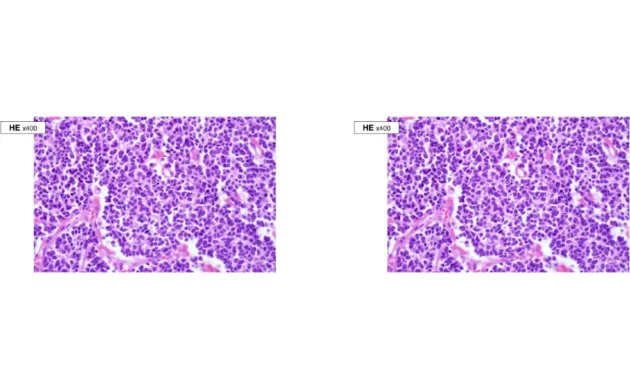Neuroendocrine cancer is a complex and often misunderstood disease that can have devastating consequences if not diagnosed and treated early. While advancements in medical science have improved survival rates, death from neuroendocrine cancer remains a reality for many patients and their families. In this article, we’ll explore the causes of death related to neuroendocrine cancer, ways to reduce risks, and strategies for coping with the emotional and physical challenges of this disease. Let’s dive in.
What is Neuroendocrine Cancer?
Neuroendocrine cancer originates from neuroendocrine cells, which are found throughout the body and have both nerve and hormone-producing functions. These cells can develop tumors in various organs, including the lungs, pancreas, gastrointestinal tract, and more. While some neuroendocrine tumors grow slowly and are treatable, others are aggressive and can spread quickly, leading to life-threatening complications.
The term “neuroendocrine cancer” encompasses a wide range of tumors, from well-differentiated (slow-growing) to poorly differentiated (fast-growing). The prognosis and risk of death depend on factors such as the tumor’s location, stage at diagnosis, and the patient’s overall health. Understanding these factors is crucial for managing the disease effectively.
Causes of Death from Neuroendocrine Cancer
Death from neuroendocrine cancer is often the result of complications arising from the disease’s progression. Below are some of the primary causes:
1. Metastasis (Spread of Cancer)
Neuroendocrine tumors can spread to other organs, such as the liver, lungs, or bones. Once the cancer metastasizes, it becomes more challenging to treat and control, often leading to organ failure or other severe complications.
2. Hormonal Imbalances
Some neuroendocrine tumors produce excessive amounts of hormones, leading to conditions like carcinoid syndrome. This can cause symptoms such as severe diarrhea, heart damage, and respiratory issues, which can be life-threatening if not managed properly.
3. Delayed Diagnosis
Because neuroendocrine cancer symptoms are often vague and mimic other conditions, many patients are diagnosed at an advanced stage. Late diagnosis reduces the effectiveness of treatment and increases the risk of death.
4. Treatment Complications
While treatments like surgery, chemotherapy, and radiation can be effective, they also carry risks. Complications from these treatments, such as infections or organ damage, can contribute to mortality.
Reducing the Risk of Death from Neuroendocrine Cancer
While neuroendocrine cancer can be aggressive, there are steps patients and healthcare providers can take to reduce the risk of death and improve outcomes.
Early Detection and Diagnosis
Early detection is one of the most effective ways to improve survival rates. Regular check-ups and awareness of symptoms—such as unexplained weight loss, persistent pain, or hormonal imbalances—can lead to earlier diagnosis and treatment.
Personalized Treatment Plans
Every patient’s case is unique, and treatment should be tailored to their specific needs. A multidisciplinary approach involving oncologists, endocrinologists, and surgeons can help create an effective treatment plan.
Lifestyle Changes
Maintaining a healthy lifestyle can support overall well-being and improve the body’s ability to cope with treatment. This includes a balanced diet, regular exercise, and avoiding smoking or excessive alcohol consumption.
Coping with the Emotional Impact of Neuroendocrine Cancer
A diagnosis of neuroendocrine cancer can be emotionally overwhelming for patients and their loved ones. Coping with the possibility of death from this disease requires both emotional and practical support.
Seeking Professional Help
Therapists, counselors, and support groups can provide a safe space to express fears and anxieties. Mental health professionals can also offer coping strategies to manage stress and depression.
Building a Support Network
Family, friends, and community resources can provide invaluable emotional and practical support. Don’t hesitate to lean on your loved ones during difficult times.
Focusing on Quality of Life
Even in advanced stages, focusing on quality of life can make a significant difference. Palliative care and pain management can help patients live more comfortably and maintain dignity.
Frequently Asked Questions (FAQs)
1. What are the survival rates for neuroendocrine cancer?
Survival rates vary widely depending on the tumor’s type, location, and stage. Early-stage tumors have higher survival rates, while advanced-stage cancers are more challenging to treat.
2. Can neuroendocrine cancer be cured?
In some cases, early-stage neuroendocrine tumors can be cured with surgery. However, advanced cases often require ongoing treatment to manage symptoms and slow progression.
3. What are the signs that neuroendocrine cancer is progressing?
Signs of progression may include worsening symptoms, new symptoms (such as jaundice or bone pain), or imaging results showing tumor growth or spread.
Conclusion
Death from neuroendocrine cancer is a difficult topic, but understanding the causes, risk factors, and coping strategies can empower patients and their families to face this challenge with resilience. Early detection, personalized treatment, and emotional support are key to improving outcomes and quality of life. While the journey may be tough, advancements in medical science and a strong support network can provide hope and comfort. Remember, you are not alone in this fight.
Table 1: Common Causes of Death from Neuroendocrine Cancer
| Cause | Description |
|---|---|
| Metastasis | Spread of cancer to other organs |
| Hormonal Imbalances | Excessive hormone production leading to complications |
| Delayed Diagnosis | Late detection reducing treatment options |
| Treatment Complications | Risks associated with surgery, chemotherapy, or radiation |
Table 2: Strategies to Reduce Risk of Death
| Strategy | Description |
|---|---|
| Early Detection | Regular check-ups and awareness of symptoms |
| Personalized Treatment | Tailored plans involving a multidisciplinary team |
| Lifestyle Changes | Healthy diet, exercise, and avoiding harmful habits |
By following this guide, you’ll be better equipped to understand the complexities of neuroendocrine cancer and take proactive steps to manage the disease. Stay informed, stay hopeful, and never underestimate the power of support.
- Understanding Small Cell Neuroendocrine Cancer: Symptoms, Diagnosis, and Treatment Options
- Understanding Large Cell Neuroendocrine Cancer: Symptoms, Diagnosis, and Treatment Options
- How Bad is Neuroendocrine Cancer? Understanding the Severity and Outlook
- Understanding Neuroendocrine Cancer ICD 10: A Comprehensive Guide
